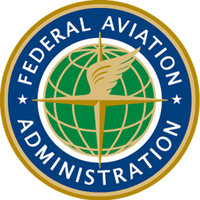Newark's Air Traffic Chaos: A Wake-Up Call for U.S. Aviation
May 6, 2025, 4:23 am

Location: United States, Illinois, Chicago
Employees: 10001+

Location: United States, District of Columbia, Washington
Employees: 10001+
Founded date: 1958
Newark Liberty International Airport, a bustling hub in the U.S. aviation network, recently faced a meltdown that shook the skies. An equipment failure left air traffic controllers blind and mute, unable to communicate with planes. The result? A cascade of delays and cancellations that left travelers stranded and airlines scrambling.
On April 28, air traffic controllers lost radar and communication with aircraft. For nearly 90 seconds, they were adrift in a sea of uncertainty. The National Air Traffic Controllers Association reported that this incident was part of a larger pattern of failures linked to aging infrastructure and staffing shortages. The chaos that ensued was a stark reminder of the vulnerabilities in the U.S. air traffic control system.
The Federal Aviation Administration (FAA) acknowledged the gravity of the situation. Controllers were overwhelmed, with many taking time off to recover from the stress of the outages. Over 1,500 flights were delayed in the days following the incident, a number that paints a grim picture of the operational strain at Newark. United Airlines, the airport's largest carrier, responded by cutting 35 flights from its daily schedule. This was a strategic move to ease the pressure on an already strained system.
The FAA has long been criticized for its failure to modernize the air traffic control system. The technology in use is outdated, and the workforce is stretched thin. The Trump administration had previously acknowledged the need for upgrades, labeling the current system as "obsolete." Yet, progress has been slow. The FAA is now attempting to recruit new controllers and incentivize current ones to stay, but these measures may be too little, too late.
United's CEO pointed fingers at the FAA, claiming that over 20% of Newark's controllers had "walked off the job." However, the union clarified that these absences were due to stress-related leave, not a mass resignation. This distinction is crucial. It highlights the toll that repeated equipment failures and staffing shortages are taking on the workforce. The air traffic control system is not just a network of technology; it is a human operation, and the stress is palpable.
The Port Authority of New York and New Jersey, which oversees Newark, has invested billions in modernizing the airport. However, these improvements hinge on a fully staffed and updated federal air traffic system. The current state of affairs is a ticking time bomb. The FAA must address staffing shortages and accelerate technology upgrades to prevent future disruptions.
Transportation Secretary Sean Duffy recently visited the Philadelphia facility, where some Newark controllers were relocated. He announced plans for a new air traffic control system, but skepticism remains. The existing system is safe, he assured, but safety should not be a matter of compromise. Grounding planes to manage capacity constraints is not a sustainable solution.
The broader implications of this chaos extend beyond Newark. U.S. airlines are already navigating turbulent waters. Economic uncertainty looms large, fueled by trade wars and fluctuating demand for travel. United Airlines, for instance, has taken the unusual step of offering two financial forecasts: one for a recession and another for a stable economy. This duality reflects the unpredictability that airlines face.
As Newark grapples with its air traffic woes, the question remains: how can the U.S. aviation system be fortified against future failures? The answer lies in a comprehensive overhaul of the air traffic control infrastructure. The FAA must prioritize modernization and invest in its workforce. The stakes are high, and the cost of inaction is steep.
Travelers deserve a reliable system. Airlines need a stable environment to operate. The air traffic control system is the backbone of aviation, and it must be treated as such. The recent events at Newark are a wake-up call. They highlight the urgent need for reform and investment in the aviation sector.
In conclusion, Newark's air traffic chaos is a symptom of a larger problem. The U.S. aviation system is at a crossroads. Will it continue to rely on outdated technology and an overworked workforce? Or will it embrace change and innovation? The choice is clear. The time for action is now. The skies demand it.
On April 28, air traffic controllers lost radar and communication with aircraft. For nearly 90 seconds, they were adrift in a sea of uncertainty. The National Air Traffic Controllers Association reported that this incident was part of a larger pattern of failures linked to aging infrastructure and staffing shortages. The chaos that ensued was a stark reminder of the vulnerabilities in the U.S. air traffic control system.
The Federal Aviation Administration (FAA) acknowledged the gravity of the situation. Controllers were overwhelmed, with many taking time off to recover from the stress of the outages. Over 1,500 flights were delayed in the days following the incident, a number that paints a grim picture of the operational strain at Newark. United Airlines, the airport's largest carrier, responded by cutting 35 flights from its daily schedule. This was a strategic move to ease the pressure on an already strained system.
The FAA has long been criticized for its failure to modernize the air traffic control system. The technology in use is outdated, and the workforce is stretched thin. The Trump administration had previously acknowledged the need for upgrades, labeling the current system as "obsolete." Yet, progress has been slow. The FAA is now attempting to recruit new controllers and incentivize current ones to stay, but these measures may be too little, too late.
United's CEO pointed fingers at the FAA, claiming that over 20% of Newark's controllers had "walked off the job." However, the union clarified that these absences were due to stress-related leave, not a mass resignation. This distinction is crucial. It highlights the toll that repeated equipment failures and staffing shortages are taking on the workforce. The air traffic control system is not just a network of technology; it is a human operation, and the stress is palpable.
The Port Authority of New York and New Jersey, which oversees Newark, has invested billions in modernizing the airport. However, these improvements hinge on a fully staffed and updated federal air traffic system. The current state of affairs is a ticking time bomb. The FAA must address staffing shortages and accelerate technology upgrades to prevent future disruptions.
Transportation Secretary Sean Duffy recently visited the Philadelphia facility, where some Newark controllers were relocated. He announced plans for a new air traffic control system, but skepticism remains. The existing system is safe, he assured, but safety should not be a matter of compromise. Grounding planes to manage capacity constraints is not a sustainable solution.
The broader implications of this chaos extend beyond Newark. U.S. airlines are already navigating turbulent waters. Economic uncertainty looms large, fueled by trade wars and fluctuating demand for travel. United Airlines, for instance, has taken the unusual step of offering two financial forecasts: one for a recession and another for a stable economy. This duality reflects the unpredictability that airlines face.
As Newark grapples with its air traffic woes, the question remains: how can the U.S. aviation system be fortified against future failures? The answer lies in a comprehensive overhaul of the air traffic control infrastructure. The FAA must prioritize modernization and invest in its workforce. The stakes are high, and the cost of inaction is steep.
Travelers deserve a reliable system. Airlines need a stable environment to operate. The air traffic control system is the backbone of aviation, and it must be treated as such. The recent events at Newark are a wake-up call. They highlight the urgent need for reform and investment in the aviation sector.
In conclusion, Newark's air traffic chaos is a symptom of a larger problem. The U.S. aviation system is at a crossroads. Will it continue to rely on outdated technology and an overworked workforce? Or will it embrace change and innovation? The choice is clear. The time for action is now. The skies demand it.